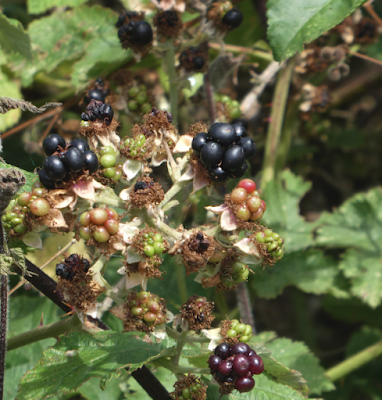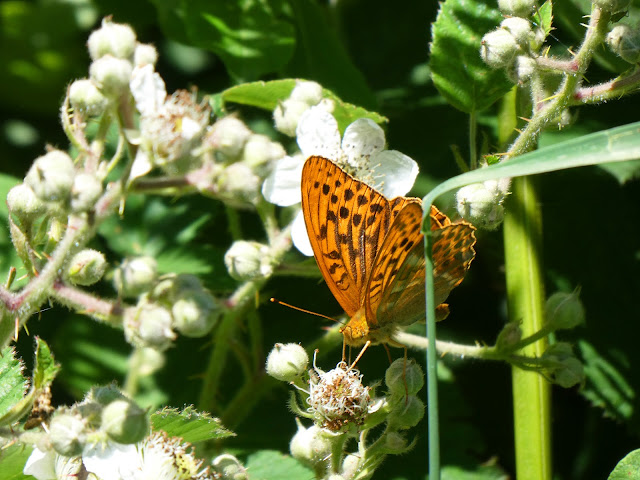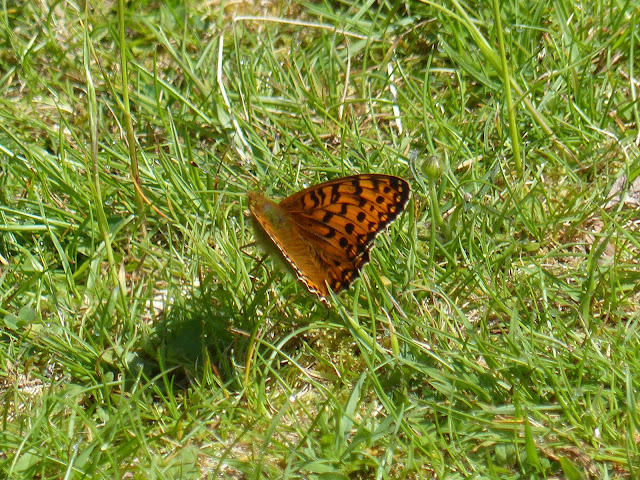I was due to make a recording of one of my poems so was trying to see if there was a quiet spot in the garden (sadly there wasn't) when an enormous beetle made its way over the patio slabs to the cover of our leafy flower pots. I knew at once it was a Stag Beetle, and was pretty sure 'she' was a female.
The kind folk on iSpot seem to agree with my ID. We occasionally see Stag Beetles, Lesser Stag Beetles and Cockchafers fluttering around the garden in the twilight. Stag Beetles can seem very eerie and ethereal creatures. I have rarely seen them on the ground ...
I wished I had a ruler to hand to take a measurement, but we have now measured the Pelargonium leaf at leisure to give an idea of length, which I estimate at 4cm.
My camera, however, was on the garden table, so I took these shots with as much speed as I could muster before the beetle disappeared into her shady bower.
Note: it seems to me that most useful credit-card sized rulers that fit in a card wallet (or pocket) are made of plastic. Some have a magnifying lens as well, I see, which would mean one useful bit of field-kit instead of two. I came across some credit-card sized (possibly tear-off) paper centimetre rules that were available at least in some parts of the world. I wonder which is the greener option, perhaps the paper ones, though I can see these blowing away rather easily ...There is always the option of making one's own.







































